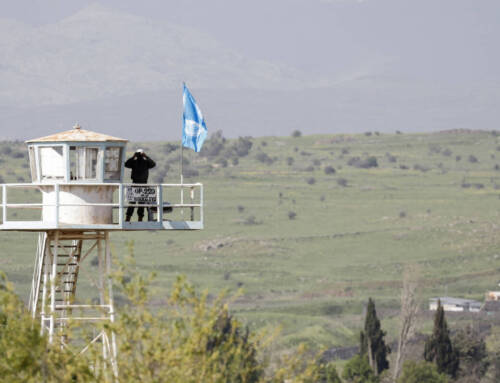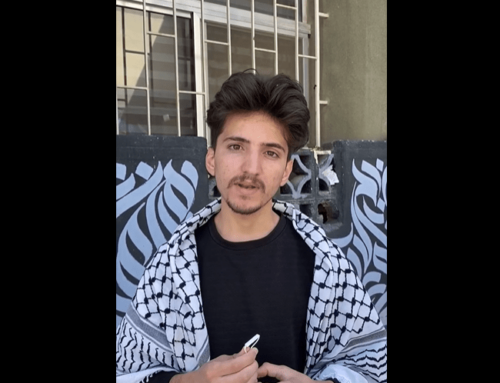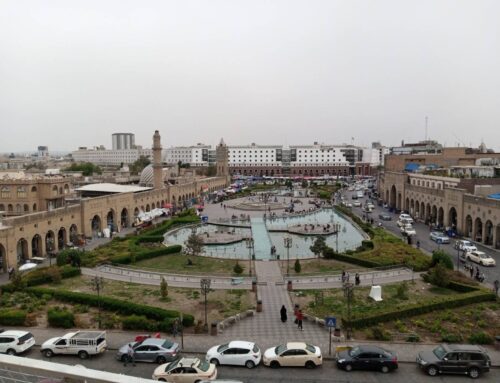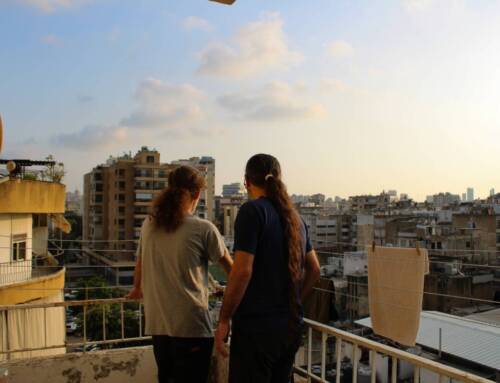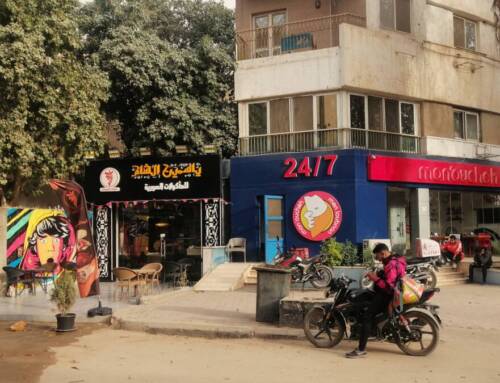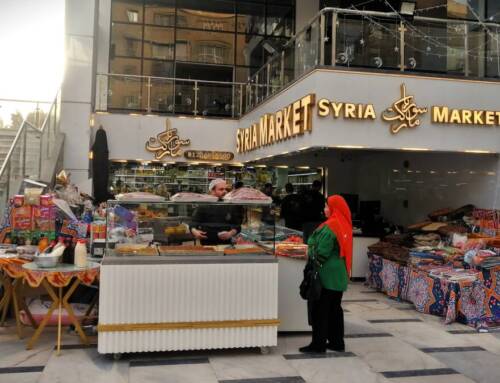One year after the expulsion of the Islamic State, civilians in Raqqa eke out an ‘existence among the rubble’
Passengers board Raqqa’s ferry service before crossing the Euphrates in October. […]
17 October 2018

AMMAN: Every night after sundown, a quiet darkness envelops the city streets that run through the eastern Raqqa neighborhood of al-Mashlab.
Not even generators illuminate the low-lying rows of shattered homes and storefronts, local residents say, with many buildings still outlined by streams of grey rubble that have yet to be cleared away.
This sector of the city once housed an important military outpost of the Islamic State (IS), and was ripped apart by some of the most intense coalition bombardment and ground fighting between hardline fighters and the US-backed Kurdish-majority Syrian Democratic Forces (SDF) during last year’s battle for Raqqa.
One year after IS was expelled from the capital of their self-proclaimed caliphate in a devastating aerial and ground campaign by the US-led international coalition and SDF, civilians are still living with the daily consequences of that offensive.
For the roughly one thousand residents of al-Mashlab who’ve returned to its post-apocalyptic landscape after the conclusion of last year’s military campaign, signs of life are few.
As for the rest of Raqqa, humanitarian workers say that water remains undrinkable, 75 percent of the city lacks a working sewage system and municipal services are virtually non-existent. Few civilians venture from their homes after hours, fearing violence at the hands of lawless gunmen who roam the streets at night. Rows of deserted apartment blocks stretch out across a barren cityscape still abandoned by residents who fled and have yet to return.
“You can’t move in the city late at night,” says local media activist Muna al-Farij. “There is chaos after dark in Raqqa.”
The city that al-Farij and hundreds of thousands now call home is, in many ways, barely recognizable.
After the fall, no home to return to
In a region that has been fought over, dominated and conquered by virtually every faction competing in Syria’s seven-year-long civil war, waves of displacement have left behind vast tracts of Raqqa virtually empty, a patchwork of ghost neighborhoods.
Raqqa’s pre-war population swelled to around a million early on in the conflict due to displacements from across the country, before clashes between government and opposition forces in early 2013 marked the beginning of a steady civilian exodus that would eventually drain the city of nearly its entire population.
At its lowest ebb just over a year ago, it was reported that only four thousand civilians remained ensconced in homes and shelters across the city, as the battle between IS fighters and coalition-backed SDF forces raged outside.
The fight for Raqqa was among the most ruinous in the history of modern warfare. Military gains against the extremists were achieved only on the back of immense destruction to housing, infrastructure and the city’s urban fabric.
By the time that SDF forces declared the city free of IS-affiliated militants on October 17 of last year, Raqqa had witnessed the heaviest aerial bombardment of any urban area since the Vietnam War, according to Amnesty International.
Children on the roof of a destroyed Raqqa home in October. Photo courtesy of local activist group Reporters Without Borders (Raqqa).
Jimmy Shahinian fled his native Raqqa early on in the war before the rise of IS, eventually reaching Germany to claim asylum. From abroad, he has continued to remotely support and train organizations operating in Raqqa through a Berlin-based organization called the Civil Society Support Center. He says around 70 percent of the metropolis’ pre-war residents, like himself, have yet to return one year since the fall of IS.
“Many of those present currently [in Raqqa] are those who were patient throughout the time of IS, and were able to get by there, despite the circumstances,” he said.
Today’s population represents a fraction of those who left in the first place. Aid organizations reported in June that only 100,000 had made their way back to Raqqa after the coalition campaign. Shahinian, meanwhile, estimates the current figure is closer to 300,000.
The low rate of returnees may stem in no small part from the fact that, for many, there is simply no home left to return to. The aerial and ground campaign to retake Raqqa left some 11,000 buildings flattened in its wake, entire neighborhoods virtually annihilated, despite hundreds of millions of dollars pumped into Raqqa reconstruction funds by the international community since then.
“I was one of the first to re-enter Raqqa,” says one local official from the Raqqa Civil Council, a SDF-affiliated governing body established after the fall of IS.
He spoke on condition of anonymity because of the sensitivity of the topic.
“When I arrived and saw the scale of destruction, I said it would be impossible for people to live here for at least 10 years.”
Scavenging ‘among the rubble’
As people have slowly trickled back in to the ruined city, the destruction has given rise to new ways of life.
Some residents have turned to scavenging through the rubble of bombed-out residential buildings, selling the twisted remains of skeletal rebar metalwork that once held together their concrete walls.
Hamza a-Raqqawi, a local activist who requested that his real name be withheld fearing that comments could jeopardize his humanitarian work, said that the practice is now an entrenched and critical part of the local economy. Many homeless women and children now rely on scavenging to get by, he says.
“They are living what we call an ‘existence among the rubble’—anything found in the debris and rubble can be used or sold.”
The recovered metal is then sold off to one of four factories in Raqqa that still manufacture products from used steel, offloading the product at cut-rate, black market prices.
It’s dangerous work. Raqqa is still strewn with unexploded ordinance, as well as boobytraps rigged by IS to detonate upon contact. Hundreds have been killed by the leftover detritus of war.
A-Raqqawi’s close friend was the victim of one such blast, set off by a rocket buried within the rubble of a house that he was sifting through for metal.
“People have faced poverty and displacement for months, so they have now consumed their savings and increased their debts,” he says, explaining why local residents are turning to life-threatening jobs driven by a sense of economic desperation.
Beyond municipal infrastructure, hospital services also remain in a dire state. At the present, hundreds of thousands struggle to obtain care at just one public hospital that serves the entire municipality, alongside a small handful of largely unregulated, expensive private hospitals. Residents have decried the lack of specialized doctors at these facilities.
“There are no specialized doctors, to the extent that someone will die within days due to a stroke or internal bleeding,” says Abu Nayef, a local farmer who spoke with Syria Direct.
For Abu Saeed Qawi, a 40-year-old construction worker who requested a pseudonym for fear of reprisals from local authorities, it’s the lack of an adequate education system that leaves him most fearful for the future of his three children.
Schools have struggled to recover after years of neglect and domination by IS, who only permitted the operation of fundamentalist schools that indoctrinated children to the brutal values of the caliphate. While the religious authorities are now gone, qualified teachers have yet to return.
“I have three children in school right now, and their teacher has a baccalaureate degree, not a university degree,” he says. “He was employed as a farmer previously.”
“This is a disaster for an entire generation,” says Qawi.
Bridge across the Euphrates
At dawn along the muddy banks of the Euphrates River, workers making their morning commute jostle to board a series of rusted-out, rectangular floats that transport goods and people across to the opposite bank. Looming off in the distance are the ruins of the old al-Mansour Bridge that once connected both sides of the river.
The bridge’s remains crumbled into the waters last June, destroyed by detonation mines planted by IS fighters as they retreated from approaching SDF troops.
An informal ferry system has taken its place—known locally as the “ferry of death” because of the high percentage of vessels that sink during crossings. It’s a stark reminder of what has been lost during four years of IS control, let alone seven long years of war.
“When winter comes, the crossing will be very hard,” says al-Farij. “With the low temperatures, the amount of water in the river becomes very high, and this is a danger. We saw cases of ferries drowning last year.”
In July, the Civil Council announced plans to reconstruct the al-Mansour bridge, reconnecting the two banks of the river and marking a critical milestone in the resumption of normal civilian and economic life in Raqqa.
Despite the city’s infrastructure being in tatters, there have been improvements. Civil society and intellectual freedom, while faced with some restrictions in areas under SDF control, has witnessed a striking revival. And the status of women, post-IS, has improved in profound and important ways.
As the social landscape has shifted away from the puritanical rules imposed by IS, there have been a few marked successes on the part of local civil society as well. Although state-run schools are struggling, a chain of NGO-funded educational facilities have shown markedly more success, and have managed to fill at least some of the gaps left by local government.
While the al-Mansour Bridge’s construction has fallen behind schedule, its return would place another image of the city’s years of ruin in the past.
It’s small steps like this that give some residents cause for hope.
“Day by day, the wheel of life is starting to move forward,” says Qawi.
“We have instability, but our situation is still better than before.”
With additional reporting by Sage Smiley.



